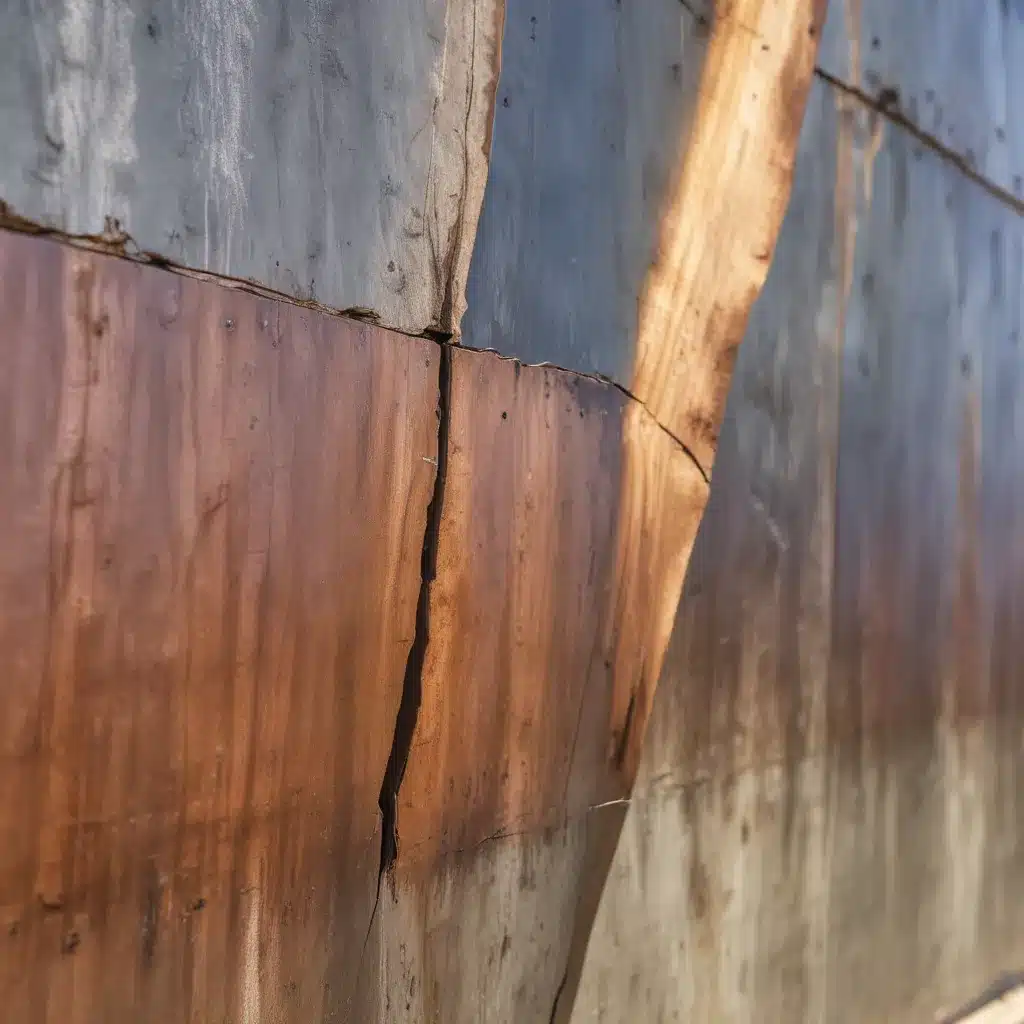
As an experienced welder and metal fabricator, I’ve had the privilege of working on a wide range of projects over the years. One technique that has become increasingly valuable in my line of work is weld overlay cladding, a process that has proven instrumental in delivering robust corrosion protection for critical components across various industries.
Understanding the Weld Overlay Process
Weld overlay cladding involves depositing a layer of corrosion-resistant or wear-resistant metal onto a base metal using arc-welding techniques. This method is particularly useful for producing complicated shapes, handling field service jobs, and manufacturing heavy-wall pressure vessel reactors. However, it’s important to note that the process is labor-intensive and requires significant floor space for equipment, underscoring the need for efficient shop floor management and skilled labor.
One of the key advantages of weld overlay cladding is its cost-effectiveness. By applying a thin layer of a more expensive, corrosion-resistant alloy onto a less costly base metal, you can achieve the desired level of protection without breaking the bank. This makes it an attractive solution for a wide range of applications, from oil and gas operations to chemical processing facilities and power generation plants.
The Power of Weld Overlay
Weld overlay cladding excels in three key areas:
Complex Shapes
Weld overlay is a versatile technique that can tackle intricate geometries with ease. This is particularly valuable when working on components with non-standard shapes, where traditional fabrication methods may struggle to achieve the desired level of precision and consistency.
Field Service
When it comes to on-site repairs and maintenance, overlay welding truly shines. The flexibility and portability of the equipment required make it an ideal solution for field applications, where you may need to work with limited space and resources.
Heavy-Wall Vessels
For pressure vessels and reactors with thick walls, weld overlay cladding provides a robust solution. By depositing a layer of corrosion-resistant material onto the base metal, you can create a durable and long-lasting component that can withstand the harsh conditions often encountered in these types of applications.
Challenges and Considerations
While weld overlay cladding boasts significant benefits, it’s essential to acknowledge its limitations and address the challenges that may arise during the process.
Dilution and Corrosion Resistance
During the weld overlay process, some of the base metal melts and mixes with the cladding material. This dilution can affect the final corrosion resistance of the coating, potentially limiting its use in highly corrosive environments. Careful control over the welding parameters and selection of compatible materials is crucial to mitigate this issue.
Distortion
As the weld metal cools and contracts, it can cause distortion, especially when the base layer is thin. Careful heat management and the use of specialized welding techniques, such as pulsed-arc welding, are essential to minimize this problem and maintain the desired shape and dimensional accuracy of the final product.
Metallurgical Compatibility
Weld overlay cladding is generally limited to joining similar metals, primarily stainless steels and nickel alloys to steel. For dissimilar metal combinations, alternative joining techniques, such as explosion welding or laser welding, may be necessary to ensure a successful and durable bond.
Space and Labor
Setting up a weld overlay process requires a substantial amount of floor space for the equipment, including the welding machine, material handling systems, and any necessary shielding or containment structures. Additionally, it’s a labor-intensive process that demands highly skilled welders to execute the technique with precision and consistency.
Optimizing the Weld Overlay Process
To ensure the success of your weld overlay cladding projects, it’s essential to focus on several key areas:
Material Selection
Carefully choosing the right cladding material is crucial. Consider factors such as corrosion resistance, wear resistance, thermal properties, and metallurgical compatibility with the base metal. Consulting with material experts and conducting thorough testing can help you make an informed decision.
Welding Technique Mastery
As a welder, honing your skills in techniques like pulsed-arc welding, tandem-arc welding, and narrow-gap welding can significantly improve the quality and efficiency of your weld overlay cladding. Continuous learning and practice are essential to staying at the forefront of the industry.
Meticulously Planned Procedures
Developing and strictly adhering to well-documented welding procedures is paramount. This includes defining the proper welding parameters, joint preparation methods, preheat and interpass temperatures, and post-weld heat treatment protocols. Consistency and attention to detail are key to achieving consistent, high-quality results.
Quality Control Measures
Implementing robust quality control measures, such as non-destructive testing (NDT), visual inspections, and dimensional checks, can help ensure the integrity and performance of your weld overlay cladding. Regular monitoring and adjustments to the process can help identify and address any potential issues before they escalate.
Continuous Improvement
In the ever-evolving world of welding and metal fabrication, embracing a culture of continuous improvement is essential. Regularly reviewing your processes, gathering feedback from clients, and exploring new technologies and techniques can help you stay ahead of the curve and deliver even better results for your customers.
Conclusion
As an experienced welder and metal fabricator, I’ve seen firsthand the immense value that weld overlay cladding can bring to various industries. From its ability to handle complex shapes and field service applications to its effectiveness in protecting heavy-wall pressure vessels, this technique has become an invaluable tool in my arsenal.
By mastering the intricacies of weld overlay cladding, such as managing dilution and distortion, ensuring metallurgical compatibility, and optimizing the process through careful material selection and welding technique refinement, we can unlock a world of possibilities for our clients. As we continue to push the boundaries of what’s possible in the realm of metal fabrication, I’m excited to see the continued evolution and application of this versatile and powerful technology.
If you’re interested in learning more about weld overlay cladding or exploring how it can benefit your own projects, I encourage you to visit The Weld Fab website. There, you’ll find a wealth of resources and expertise dedicated to helping metal fabricators and welders like ourselves excel in our craft and deliver exceptional results for our clients.


